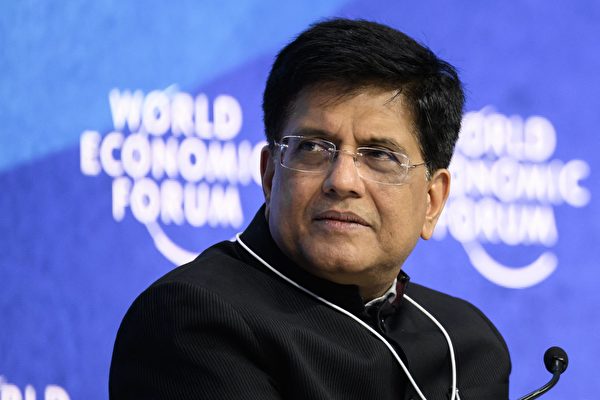India’s Minister of Commerce has stated that India has rejected joining the Regional Comprehensive Economic Partnership (RCEP) led by the Chinese Communist Party, insisting that signing a free trade agreement with China does not align with India’s interests.
In an interview with CNBC on Sunday, September 22nd, Indian Minister of Commerce and Industry Piyush Goyal stated, “India will not join RCEP because it does not reflect the guiding principles proposed by ASEAN when it was initially suggested and signing a free trade agreement with China does not serve India’s interests.”
RCEP was initiated by the 10 ASEAN countries, later inviting China, Japan, South Korea, Australia, and New Zealand, with existing free trade agreements, to formally sign during the East Asia Cooperation Leaders’ Series Meeting on November 15, 2020. It came into effect in January 2022. Due to China being the largest economy among RCEP participating countries and the most active promoter of RCEP, it is widely believed that China is the driving force behind RCEP.
RCEP negotiations began in 2013, originally including India. However, in 2019, India chose not to join RCEP citing unresolved “core interests” issues. At that time, India did not provide detailed explanations of what these unresolved core interests were.
Goyal pointed out that Beijing had already signed free trade agreements with ASEAN, Japan, and South Korea at that time.
“This does not serve the interests of our farmers, RCEP does not reflect the desires of our small and medium-sized industries and sectors, but in a way, it is just another free trade agreement with China,” he said.
Goyal highlighted China’s trade practices as extremely opaque. He mentioned that when looking at issues from an Indian perspective, it is challenging to compete with an opaque economy.
“Of course, no one domestically would want to sign a free trade agreement with an opaque economy; their economic practices are very opaque, and their trade system, political system, and economic management are entirely different from what the democratic world desires,” he added.
Goyal also criticized China for using World Trade Organization policies to its advantage, flooding global economies with low-quality goods at cheap prices that do not meet quality standards.
At a time of weak domestic demand, Beijing chose to boost its domestic manufacturing capacity and then export surplus products overseas. This policy reflects China’s two key objectives: building a comprehensive industrial supply chain to reduce reliance on foreign products and making other countries and regions more dependent on China’s supply chain.
China’s share in global manufacturing has reached 30%. China’s manufacturing trade surplus accounts for a significant portion of the world GDP and has been rapidly growing at a rate of 2%. This share is already higher than the combined manufacturing surplus of Japan and Germany during their peak periods.
Jay Shambaugh, the Deputy Secretary of the U.S. Treasury responsible for international affairs, stated that many countries, like the United States, seek to address the negative spillover effects of China’s non-market behaviors.
Many of China’s trading partners, from the United States and Europe to even some Asian countries seen as relatively friendly towards China, are increasing tariffs and other trade barriers to resist cheap Chinese products.
On September 10, the Indian Ministry of Finance issued an order to impose tariffs ranging from 12% to 30% on certain steel products imported from China and its neighboring country Vietnam, aimed at protecting and promoting the domestic industry.
Currently, China’s ongoing real estate crisis has led to a contraction in the domestic construction industry, causing an oversupply of steel. From April to July, China became India’s largest steel exporter, shipping approximately 807,000 tons of steel to India, followed by Japan and South Korea.
According to data from the commodity consultancy company BigMint, due to increased imports and weak exports, steel prices in India have plummeted to their lowest levels in over three years.

